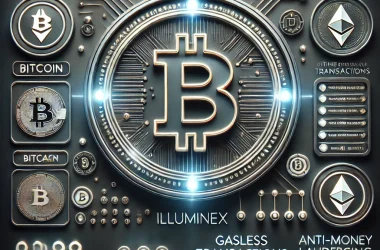Proxy-Upgradeability in Smart Contracts
Smart contract proxy upgradeability lets developers update deployed contracts without changing their state or address. This feature enables fixing bugs or adding new features but also introduces potential risks.
Traditional Immutability
Smart contracts, self-executing agreements on blockchain networks, typically operate as immutable code once deployed. This immutability ensures that contract terms cannot be altered unilaterally, fostering trust in blockchain technology. However, the inability to modify contracts after deployment can be problematic, especially when bugs are found or improvements are needed.
Benefits of Proxy-Upgradeability
Proxy-upgradeability addresses this issue with a two-contract system. A proxy contract stores the state and holds user funds, while a logic contract contains the functionality. The proxy delegates function calls to the logic contract, which can be replaced with an upgraded version. This method maintains the proxy’s address and preserves stored data.
This approach offers significant advantages. Developers can patch vulnerabilities, add features, and optimize performance without disrupting user interactions or requiring fund migration. Major DeFi protocols like Compound, Aave, and Uniswap V3 have adopted upgradeable contracts. They use this flexibility to improve their platforms, combining rigorous security measures and transparent operations to establish trust.
Security Measures
These protocols implement comprehensive security practices, including thorough audits, formal verifications, and ongoing bug bounty programs. Their smart contracts are open-source, allowing public scrutiny and verification. Additionally, they adopt decentralized governance systems where token holders can participate in decision-making. This enhances transparency and reduces the risk of unilateral changes.
Their established track records further bolster trustworthiness. They have operated successfully for significant periods and managed billions of dollars in assets. They consistently update and improve their systems based on community feedback and evolving market conditions. Robust monitoring, alerting systems, and detailed incident response plans demonstrate their commitment to security.
Regulatory Compliance and Resilience
Despite operating in a nascent space, their efforts toward regulatory compliance add credibility from regulators’ perspectives. High liquidity in these protocols contributes to their resilience against certain attacks and market manipulations. However, no system is entirely risk-free, so users should always exercise caution and conduct due diligence when interacting with DeFi protocols.
Risks of Upgradeable Smart Contracts
The ability to modify smart contract logic introduces new exploitation vectors. Centralization risk is a primary concern, with upgrade capabilities often controlled by a small group of administrators or governance participants. This concentration of power may contrast with the decentralized ethos of many blockchain projects if not combined with transparent DAO practices.
Potential Threats
Malicious upgrades are another potential threat. If compromised or acting in bad faith, administrators could alter contract logic to siphon user funds or manipulate protocol operations. While governance processes and security measures aim to mitigate this risk, the possibility remains a point of contention within the community.
Technical Vulnerabilities
Technical vulnerabilities in the upgrade process pose additional dangers. Errors during upgrades can lead to loss of funds, data corruption, or inoperable contracts. The complexity of proxy patterns increases the attack surface, potentially introducing subtle bugs that may go unnoticed until exploited.
How to Interact with DeFi Safely
Users navigating the DeFi landscape should identify and evaluate upgradeable contracts. Examining contract code for proxy patterns, such as OpenZeppelin’s, can reveal upgradeability features. Protocol documentation often discloses upgrade capabilities, but this information may not always be prominently displayed.
Evaluating Safety
Assessing the safety of upgradeable contracts requires careful consideration of governance structures and upgrade processes. Timelock delays on upgrades allow users to react to proposed changes. Multi-signature controls on administrative functions distribute power and reduce single points of failure. The protocol team’s reputation and track record offer additional context for evaluating trustworthiness.
Risk Management
Limiting exposure and long-term storage of large amounts in these systems may be recommended for risk-averse users. Actively monitoring upgrade proposals and participating in governance processes, where possible, allows users to stay informed and influence protocol decisions.
Balancing Innovation and Security
The debate surrounding smart contract upgradeability reflects broader tensions between innovation and security, flexibility, and immutability in the blockchain space. Upgradeable contracts offer potent tools for protocol development but require users to trust human systems rather than rely solely on immutable code.
Striking the right balance between upgradeability and security remains a central challenge. Users must remain vigilant, carefully evaluating the risks and benefits of interacting with upgradeable systems. Self-sovereignty carries costs and risks that users must bear. In traditional finance, these costs are handled by centralized bodies like banks. In Web 3, self-custody means users must take security seriously.
Developer and Protocol Team Responsibilities
Developers and protocol teams are responsible for implementing robust governance mechanisms and transparent upgrade processes to maintain user trust. This effort supports a secure and trustworthy DeFi ecosystem.
The post Understanding the pros and cons of smart contract upgradeability in DeFi appeared first on CryptoSlate.















